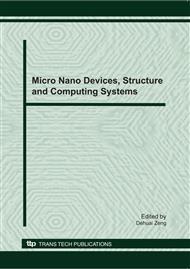p.377
p.383
p.388
p.393
p.399
p.406
p.412
p.420
p.424
A Research on Temperature Dependent Characteristics of Quality Factor of Silicon MEMS Gyroscope
Abstract:
The performance of silicon micro gyroscope affected by the quality factor of silicon micro gyroscope is introduced. The temperature characteristics of quality factor of silicon micro gyroscope are also presented. The theoretical analysis suggests that the air damping is the key factor determining the quality factor of silicon micro gyroscope and the quality factor determined by the air damping is in inverse proportion to the square root of temperature. According to the theory, the reciprocal of the quality factor of gyroscope can be approximately expressed as a linear equation with respect to temperature over a temperature range from 238K to 328K. Using the high speed data acquisition card to sample the decayed drive amplitude signal of gyroscope, the quality factor of gyroscope can be calculated from those sample data. The quality factors of gyroscopes at different temperature are experimented in a high accurate thermostat. The experimental results validate the approximate relationship between the quality factor of silicon micro gyroscope and the temperature.
Info:
Periodical:
Pages:
399-405
Citation:
Online since:
December 2010
Authors:
Price:
Сopyright:
© 2011 Trans Tech Publications Ltd. All Rights Reserved
Share:
Citation:


